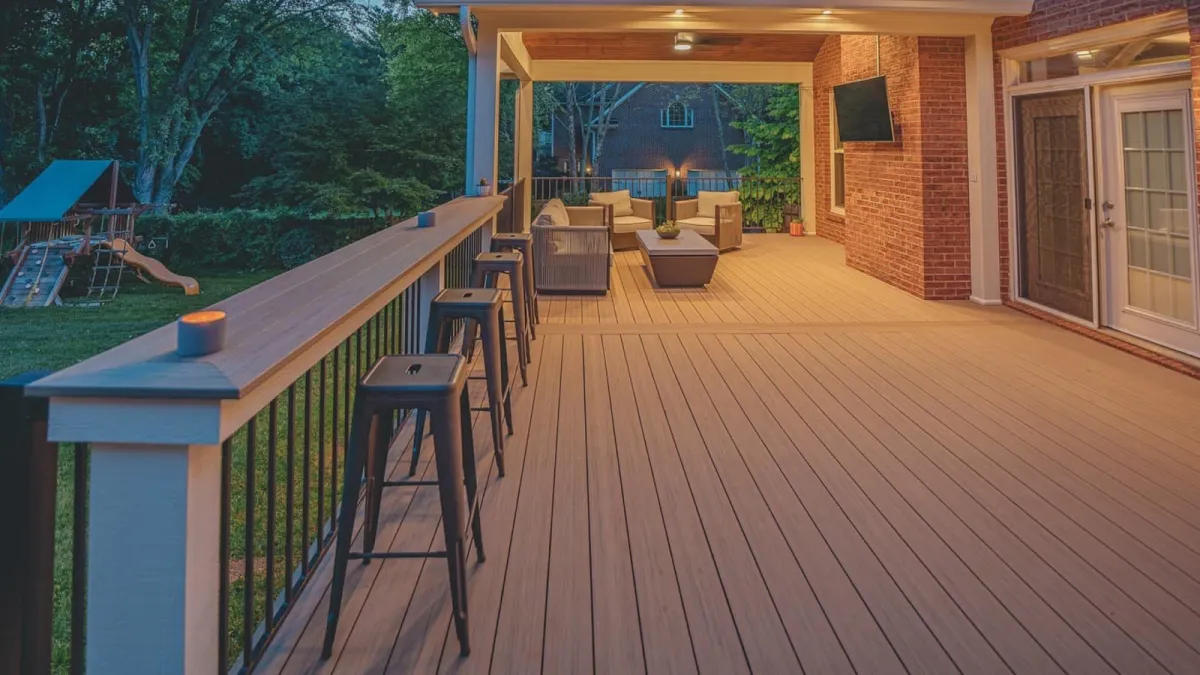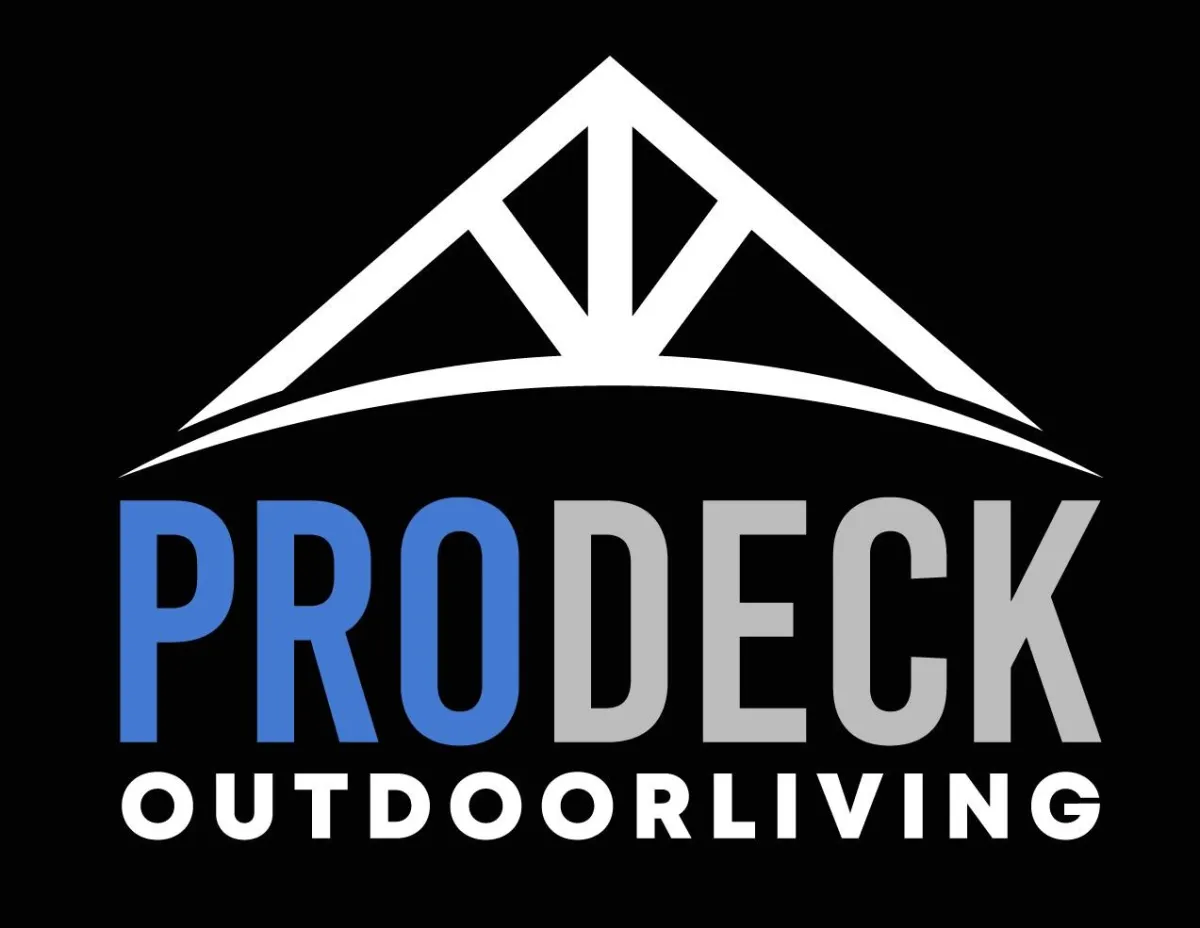
Knoxville's #1 Deck & Patio cover solutions
Blog

What Are Some Design Considerations For Building A Deck?
When designing a deck, consider factors such as its intended use and functionality, the layout to optimize space and traffic flow, material choices based on durability and maintenance requirements, safety features like railings and lighting, integration with the surrounding landscape and architectural style, adherence to local building codes and permits, budget constraints, and long-term maintenance needs to ensure durability and aesthetic appeal.
When embarking on the journey of building a deck, it's essential to consider a multitude of factors to ensure your outdoor space is both functional and aesthetically pleasing. At ProDeck Outdoor Living in Knoxville, Tennessee, we understand the importance of creating not just a deck, but a personalized oasis that enhances your home's value and your quality of life.
Key Takeaways:
Purposeful Design: Tailor the deck layout to accommodate specific activities.
Material Considerations: Understand the pros and cons of wood versus composite decking.
Safety First: Prioritize safety features like railings and lighting.
Budget Planning: Factor in both initial costs and long-term maintenance expenses.
Regulatory Compliance: Ensure compliance with local building codes and regulations.
Choosing The Right Deck Material: Wood Vs. Composite
Choosing the right deck material involves weighing the pros and cons of wood versus composite options. Each material offers unique benefits and considerations, influencing durability, maintenance, aesthetics, and cost. Here’s a detailed comparison to help you make an informed decision:
Natural Beauty and Aesthetics
Wood: Known for its natural warmth and variety of grains and colors, wood decks offer a classic, traditional look that complements outdoor spaces beautifully.
Composite: Composite materials mimic the appearance of natural wood or provide contemporary finishes. They come in a wide range of colors and textures, offering versatility in design.
Durability
Wood: Depending on the type of wood (e.g., cedar, redwood, pressure-treated lumber), durability can vary. Hardwoods like ipe and mahogany are naturally resistant to rot and insects.
Composite: Composite decking is engineered to resist fading, scratches, stains, and mold. It doesn’t warp, crack, or splinter like traditional wood, making it highly durable over time.
Maintenance
Wood: Regular maintenance such as staining, sealing, and periodic refinishing is necessary to protect against moisture, UV rays, and wear. Proper care extends the lifespan of a wood deck.
Composite: Requires minimal maintenance—typically cleaning with soap and water. It doesn’t need staining, sealing, or refinishing, saving time and effort over the long term.
Longevity and Warranty
Wood: Lifespan varies based on maintenance and environmental factors. Hardwoods can last 20-30 years or more with proper care.
Composite: Often comes with extended warranties, sometimes up to 25 years or more, reflecting its durability and resistance to wear and tear.
Environmental Impact:
Wood: Sustainable options like cedar and redwood are available, sourced from responsibly managed forests. However, pressure-treated lumber may raise environmental concerns due to chemical treatments.
Composite: Made from recycled materials (such as recycled plastics and wood fibers), some composites are eco-friendly. They reduce the demand for virgin wood and plastic.
Cost Considerations:
Wood: Initial costs can be lower than composite, especially for pressure-treated lumber. Hardwoods and premium wood species may be more expensive upfront.
Composite: Higher initial investment compared to wood, but savings over time due to lower maintenance costs. Prices vary based on brand, quality, and features.
Deck Layout and Functional Zones
Designing an effective deck layout involves creating distinct functional zones that cater to various activities, enhancing both usability and aesthetic appeal. Here's a comprehensive guide to planning your deck layout:
Entertainment Area: Designate a spacious section for outdoor furniture like sofas, coffee tables, and loungers. This area is ideal for hosting gatherings and relaxing with friends and family.
Dining Zone: Incorporate a dining table and chairs suited for alfresco dining. Place this area conveniently close to the kitchen or grill for easy food preparation and serving during meals.
Cooking and Prep Area: If you have an outdoor kitchen or grill, allocate space nearby for countertops, storage, and appliances. This setup ensures seamless cooking and entertaining outdoors.
Relaxation Nook: Create a cozy corner with comfortable seating options such as hammocks, lounge chairs, or a daybed. This area is perfect for unwinding, reading, or enjoying a quiet moment outdoors.
Children's Play Area: Designate a safe and accessible space for children to play with toys, engage in activities, or simply run around. Consider integrating safety features like soft flooring or secure boundaries.
Key Considerations for Deck Layout
Traffic Flow: Ensure pathways between functional zones are clear and easily navigable, promoting safety and convenience for all users.
Privacy and Screening: Use elements like planters, trellises, pergolas, or privacy walls to define zones and create a sense of intimacy and seclusion within your outdoor space.
Lighting: Incorporate ambient, task, and accent lighting to enhance the deck's usability and ambiance during evening hours. Options include string lights, lanterns, and built-in LEDs.
Accessibility: Design the layout to be accessible for all users, including those with mobility considerations. Implement ramps, wider pathways, and ergonomic furniture arrangements as needed.
Integration with Landscape: Blend the deck seamlessly with your yard's natural features and landscaping. Consider incorporating existing trees, gardens, or water features to enhance the overall aesthetic appeal.
Deck Maintenance Tips
Maintaining your deck ensures it remains safe, beautiful, and functional year-round. Regular upkeep not only enhances its longevity but also preserves its aesthetic appeal. Here are essential tips for effective deck maintenance:
Inspect Regularly: Check for signs of wear, rot, or damage, especially after harsh weather.
Clean Thoroughly: Sweep debris regularly and wash the deck with a mild detergent and water annually.
Stain and Seal: Apply a fresh coat of stain or sealer every 2-3 years to protect against moisture and UV damage.
Trim Nearby Vegetation: Keep plants and bushes near the deck trimmed to prevent mold growth and debris buildup.
Check Hardware: Tighten loose screws or nails and replace damaged boards promptly to maintain structural integrity.
Protect Furniture: Use furniture pads or coasters to prevent scratches and water damage from pots and outdoor furniture.
Manage Water Drainage: Ensure gutters and downspouts direct water away from the deck to prevent pooling and moisture damage.
Inspect Railings and Steps: Secure loose railings and check steps for stability to prevent accidents.
Regular maintenance not only enhances your deck's appearance but also protects your investment in outdoor living. By following these tips, you can enjoy a safe, beautiful deck for years to come.
Sustainable Deck Design
Designing a sustainable deck involves integrating eco-friendly materials and practices that minimize environmental impact while maximizing longevity and functionality. Here are key considerations for creating a sustainable deck:
Material Selection
Choose sustainable materials like reclaimed wood, bamboo, or composite decking made from recycled materials. These options reduce the demand for virgin resources and promote eco-friendly practices.
Durability
Opt for materials known for their durability and longevity, requiring less frequent replacement and maintenance. This reduces waste over time and enhances the deck's lifespan.
Natural Finishes
Use natural stains and finishes that are low in volatile organic compounds (VOCs) to minimize indoor air pollution and environmental impact during application.
Energy Efficiency
Incorporate design elements that enhance energy efficiency, such as strategically placed shade structures or solar-powered lighting. These features reduce energy consumption and promote sustainability.
Water Management
Implement water-efficient landscaping around the deck and consider permeable paving materials to reduce stormwater runoff and promote groundwater recharge.
Recycling and Waste Management
Plan for recycling construction waste and choose suppliers committed to sustainable practices. Minimize packaging waste and select products with minimal environmental footprint.
Native Plants and Landscaping
Use native plants in landscaping around the deck to reduce water usage, support local biodiversity, and create a natural habitat for wildlife.
Long-term Maintenance
Choose low-maintenance materials and design features that require minimal upkeep, reducing the use of harmful chemicals and resources over the deck's lifecycle.
FAQs
What is the best material for a durable deck? Composite decking is often preferred for its durability, low maintenance, and resistance to weather and insects.
How can I enhance privacy on my deck? Use privacy screens, plantings, or pergolas to create secluded areas and reduce visibility from neighbors.
What are the benefits of an outdoor kitchen on a deck? An outdoor kitchen enhances functionality and entertainment value, allowing for cooking and dining outdoors.
How should I plan for deck lighting? Incorporate a mix of ambient, task, and decorative lighting to extend the deck's use into the evening hours.
What maintenance does a deck require? Regular cleaning, inspections, and occasional refinishing or sealing are necessary to maintain a deck's integrity and appearance.
Transform Your Outdoor Living: Partner with ProDeck Outdoor Living Today!
Crafting the perfect deck involves thoughtful consideration of various factors—from design and materials to functionality and maintenance. At ProDeck Outdoor Living in Knoxville, Tennessee, we're dedicated to creating outdoor spaces that exceed expectations, blending craftsmanship with customer satisfaction. Let us transform your vision into reality and enhance your home with a deck that reflects your lifestyle and personality.
Contact us now at ProDeck Outdoor Living for a consultation. Discover how our expertise can turn your outdoor space into a masterpiece that enhances your home and enriches your life.
BLOG
Why We Care About Our Clients at ProDeck Outdoor Living
At ProDeck Outdoor Living, our passion goes beyond building beautiful outdoor spaces. We care deeply about our clients because we believe that a home’s outdoor area should be more than just a deck or patio—it should be a space where memories are made, laughter is shared, and moments of peace and relaxation are enjoyed. Our commitment to excellence is rooted in our dedication to the people we serve.
Our Why: Creating Meaningful Outdoor Spaces
We do what we do because we understand the value of outdoor living. Whether it’s a backyard deck where a family gathers for summer barbecues, a pergola that provides shade for afternoon reading, or a custom patio that serves as the heart of celebrations, we take pride in transforming outdoor areas into places of comfort and connection. Our goal is to design and build spaces that enhance our clients’ lifestyles and bring their visions to life.
Building More Than Just Structures
To us, every project is personal. We take the time to listen to our clients, understand their needs, and collaborate closely to bring their dreams to reality. Every detail matters because we know that a well-crafted outdoor space can add joy and value to a home. Our team’s dedication to quality craftsmanship and customer satisfaction is what sets us apart. We treat every project as if it were for our own home, ensuring that we deliver not just a deck or patio, but an experience that exceeds expectations.
A Commitment to Trust and Transparency
Trust is at the core of what we do. From the initial consultation to the final touches, we believe in clear communication, honesty, and reliability. Our clients trust us to bring their outdoor visions to life, and we take that responsibility seriously. That’s why we work with high-quality materials, skilled professionals, and a customer-first approach to ensure that every project is completed with precision and care.
Why We Care
At the heart of our work is a genuine passion for improving lives through outdoor living. We care about our clients because we believe in the power of well-designed spaces to create happiness, relaxation, and unforgettable moments. Seeing the joy on a client’s face when they step onto their new deck or patio for the first time is why we do what we do.
Thank you for trusting ProDeck Outdoor Living to bring your outdoor dreams to life. We’re
honored to be a part of your journey in creating spaces that truly feel like home.
THE BEST IN OUTDOOR LIVING & CONSTRUCTION
Request An Estimate To Get Started Today!
Copyright © ProDeck Outdoor Living. 2025. All Rights Reserved. Privacy Policy. Terms & Conditions. Web Design by Fused Media


